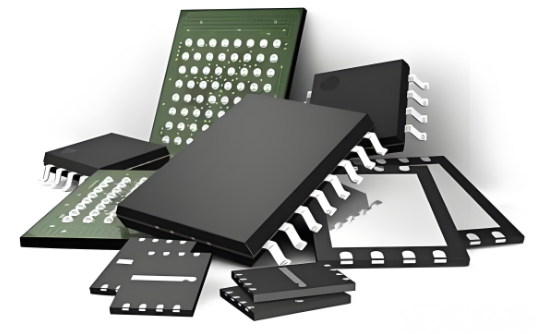NAND Flash Memory is a type of non-volatile storage technology that retains data even when power is removed, making it a cornerstone of modern digital storage. Named after the NAND logic gate (due to its electrical structure), it is widely used in consumer electronics, data centers, and industrial systems for its high density, fast write speeds, and cost-effectiveness.
NAND Flash stores data in memory cells composed of floating-gate transistors, which trap electrons to represent binary values (0s and 1s). Key characteristics of its operation include:
-
Cell Structure: Data is organized into blocks and pages. A "page" (typically 4KB–16KB) is the smallest unit for reading/writing, while "blocks" (composed of multiple pages) are the smallest unit for erasing data. This structure means erasing must occur in larger blocks, distinguishing it from NOR Flash (which allows byte-level erasure).
-
Charge Trapping: Electrons are injected into or removed from the floating gate using Fowler-Nordheim tunneling or hot-electron injection, altering the transistor’s threshold voltage to store data.
-
Types of Cells:
-
SLC (Single-Level Cell): Stores 1 bit per cell. Offers fastest speeds, highest endurance (up to 100,000 write cycles), and greatest reliability, but lower density and higher cost.
-
MLC (Multi-Level Cell): Stores 2 bits per cell. Balances performance and cost, with moderate endurance (10,000–30,000 cycles), common in consumer SSDs.
-
TLC (Triple-Level Cell): Stores 3 bits per cell. Higher density and lower cost, but reduced endurance (3,000–10,000 cycles), used in mainstream SSDs and USB drives.
-
QLC (Quad-Level Cell): Stores 4 bits per cell. Maximizes density and minimizes cost, with lower endurance (1,000–3,000 cycles), ideal for archival storage and data centers.
NAND Flash dominates storage markets due to its unique benefits:
-
Non-Volatility: Retains data without power, critical for portable devices and backup systems.
-
High Density: Stores large amounts of data in small form factors, enabling slim smartphones, compact SSDs, and high-capacity memory cards.
-
Fast Access Speeds: Faster read/write times than traditional hard disk drives (HDDs), reducing boot times and improving application responsiveness.
-
Durability: No moving parts, making it resistant to physical shock—ideal for laptops, cameras, and industrial equipment.
-
Energy Efficiency: Consumes less power than HDDs, extending battery life in mobile devices.
NAND Flash is ubiquitous in modern technology, supporting diverse use cases:
-
Consumer Electronics: Smartphones, tablets, laptops, and digital cameras use NAND for internal storage and expandable memory (e.g., microSD cards).
-
Data Centers: Enterprise SSDs with NAND enable fast data access for cloud computing, big data analytics, and virtualization, replacing HDDs in high-performance systems.
-
Automotive: Used in infotainment systems, navigation, and ADAS (Advanced Driver-Assistance Systems) for storing maps, sensor data, and firmware, with automotive-grade NAND (AEC-Q100 qualified) designed for extreme temperatures.
-
Industrial & IoT: Powers industrial sensors, smart meters, and IoT devices, storing operational data in harsh environments where reliability is critical.
-
Wearables & Medical Devices: Compact NAND modules fit into fitness trackers, pacemakers, and portable diagnostic tools, supporting continuous data logging.
The NAND Flash market evolves rapidly, driven by demand for higher capacity and performance:
-
3D NAND: Vertically stacking memory cells (up to 500+ layers) increases density without shrinking cell size, overcoming physical limits of 2D NAND.
-
QLC & PLC (Penta-Level Cell): Storing 4 or 5 bits per cell maximizes capacity, targeting cost-sensitive applications like data centers.
-
NVMe Integration: NAND-based SSDs using the NVMe protocol achieve faster speeds (up to 32Gbps) for high-performance computing and gaming.
-
Sustainability: Manufacturers (e.g., Samsung, Micron, SK Hynix) optimize production to reduce energy use and extend NAND lifespan, aligning with eco-friendly initiatives.
Despite its advantages, NAND Flash faces challenges:
-
Endurance: Finite write cycles require wear-leveling algorithms to distribute writes evenly and extend lifespan.
-
Cost vs. Capacity: Higher-density cells (QLC/PLC) reduce per-GB costs but sacrifice speed and endurance.
-
Data Retention: Over time, electrons leak from cells, requiring periodic data refresh—critical for long-term storage.
Keywords: NAND Flash Memory, SLC NAND, TLC NAND, 3D NAND, SSD storage, NAND applications, automotive NAND, consumer electronics NAND, data center SSDs.
NAND Flash continues to evolve, driving innovations in storage technology and enabling the next generation of digital devices and infrastructure.
